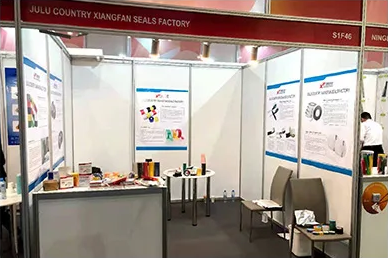Butyl Rubber Waterproofing A Durable Solution for Your Needs
Waterproofing is a critical aspect of construction and maintenance, especially in regions prone to heavy rainfall or flooding. Among the various waterproofing materials available, butyl rubber has gained popularity due to its exceptional waterproofing properties and durability. This synthetic rubber is synthesized from isobutylene, making it an excellent option for various applications, including roofs, foundations, and below-grade structures.
One of the primary advantages of butyl rubber waterproofing is its outstanding flexibility. It can easily accommodate movement and settling in structures without losing its sealing properties. This flexibility is essential in regions where temperature fluctuates or where structures might expand and contract due to environmental conditions. Butyl rubber maintains its integrity even when subjected to extreme weather conditions, ensuring that protected areas remain free from water infiltration.
Butyl rubber is also known for its excellent adhesion qualities. It adheres strongly to a variety of substrates, including concrete, metal, and wood, which makes it suitable for diverse applications. This strong adhesion minimizes the risk of delamination, a common issue with less effective waterproofing materials. As a result, butyl rubber waterproofing systems can provide lasting protection, reducing the need for frequent repairs or replacements.
butyl rubber waterproofing

Another key benefit of butyl rubber is its resistance to various chemicals, UV rays, and aging. Many other waterproofing options can degrade over time due to exposure to these elements, leading to compromised structures. However, butyl rubber is designed to withstand harsh environmental conditions, ensuring the longevity of the waterproofing layer. This resistance not only enhances the lifespan of the material but also maintains the aesthetic appearance of the surfaces it protects.
Installation of butyl rubber waterproofing systems is relatively straightforward. It can be applied as a liquid or in sheet form, allowing for easy coverage of various shapes and sizes. The application process typically involves proper surface preparation, including cleaning and priming if necessary. Once applied, it forms a continuous barrier that effectively seals out water. Furthermore, the quick curing times associated with butyl rubber mean that projects can proceed without excessive delays.
In terms of cost-effectiveness, although the initial investment in butyl rubber waterproofing might be higher than some alternatives, its long-term benefits often outweigh the initial expense. The longevity and durability of butyl rubber mean lower maintenance costs and reduced likelihood of water damage that could lead to more significant repairs in the future.
In conclusion, butyl rubber waterproofing stands out as a reliable and effective solution for protecting structures against water damage. With its flexibility, strong adhesion, resistance to environmental factors, ease of installation, and long-term cost-effectiveness, it is a wise choice for homeowners and builders alike. Whether you're constructing a new building or reinforcing an existing one, incorporating butyl rubber waterproofing can greatly enhance the project's resilience and sustainability, ensuring peace of mind for years to come.
-
XIANGFAN Rubber Tape-Ultimate Solutions for All Your Insulation NeedsNewsJun.24,2025
-
XIANGFAN Rubber Tape-Protection for Industrial and Residential ApplicationsNewsJun.24,2025
-
XIANGFAN Rubber Tape: Superior Safety and Sealing for Demanding EnvironmentsNewsJun.24,2025
-
XIANGFAN Rubber Tape: Reliable Solutions for Every Electrical ChallengeNewsJun.24,2025
-
XIANGFAN Electrical & Industrial Tape: Powering Reliability Across IndustriesNewsJun.24,2025
-
XIANGFAN Electrical & Industrial Tape: Excellence in Every ApplicationNewsJun.24,2025
